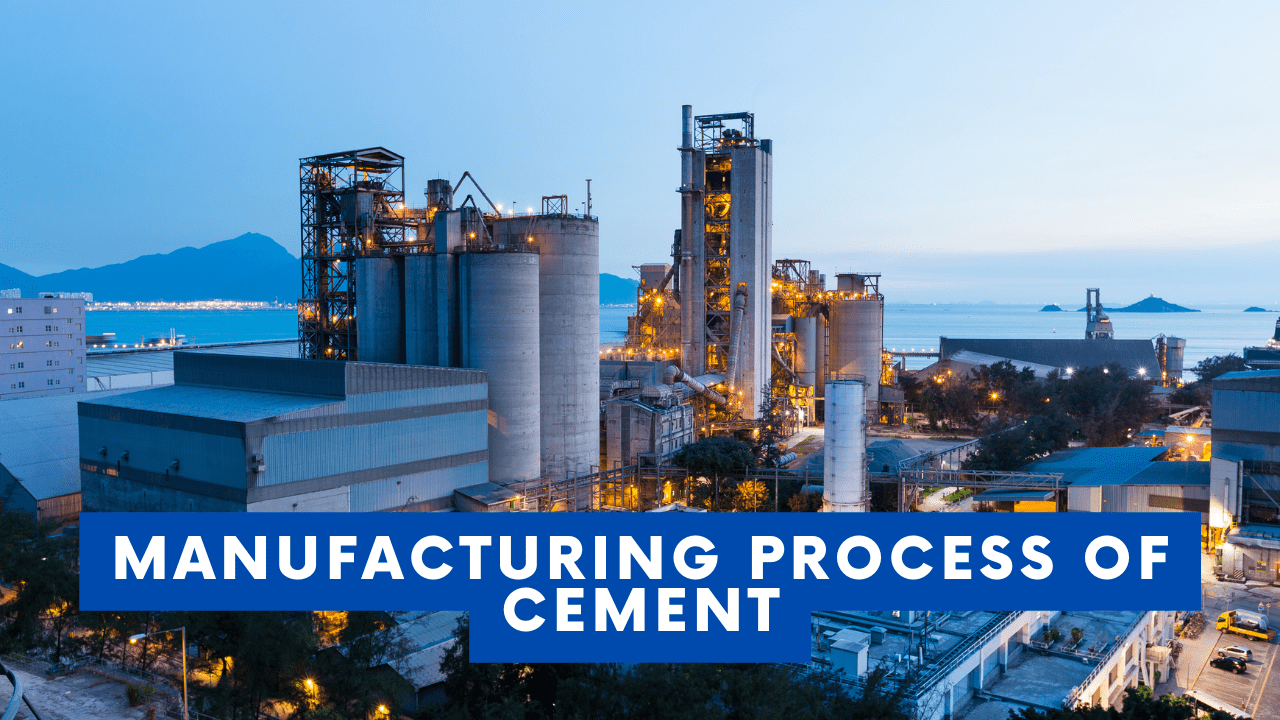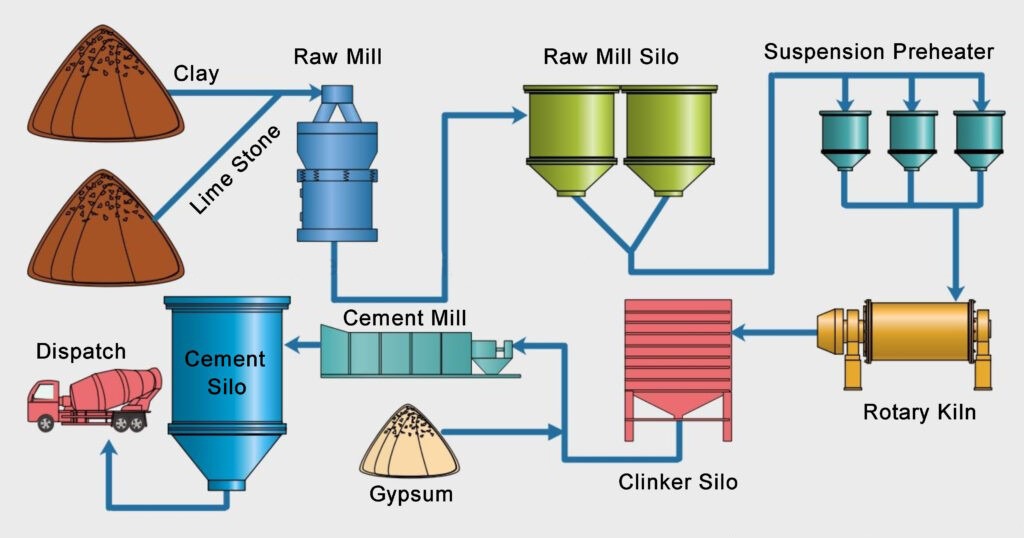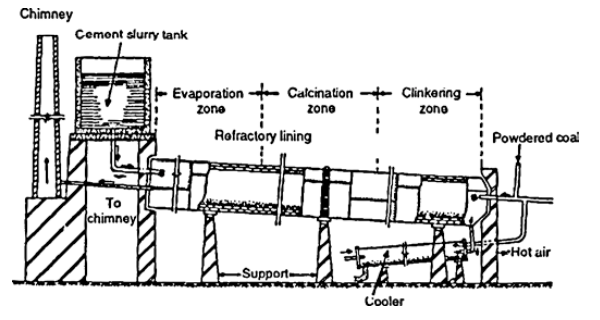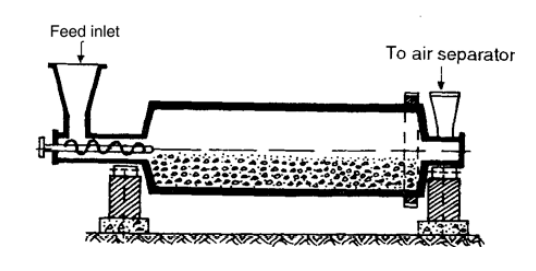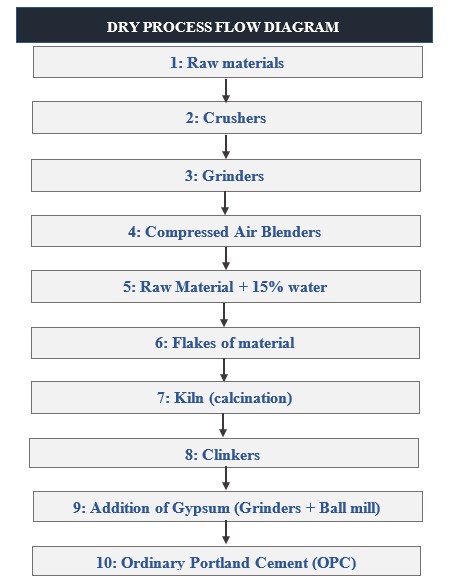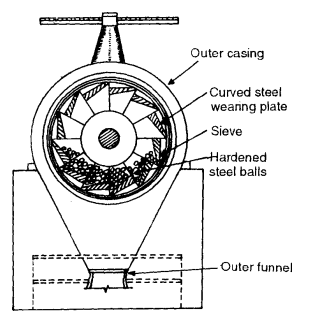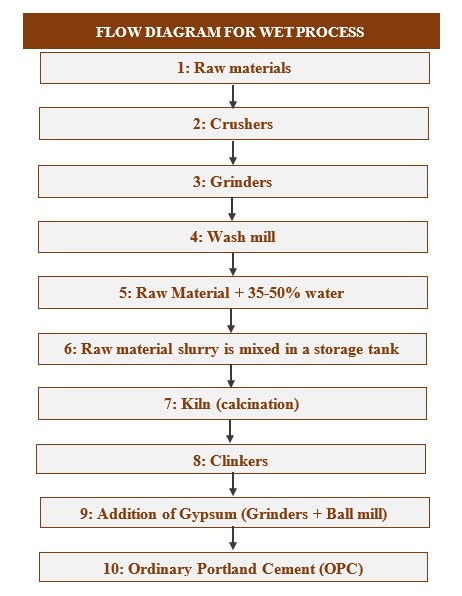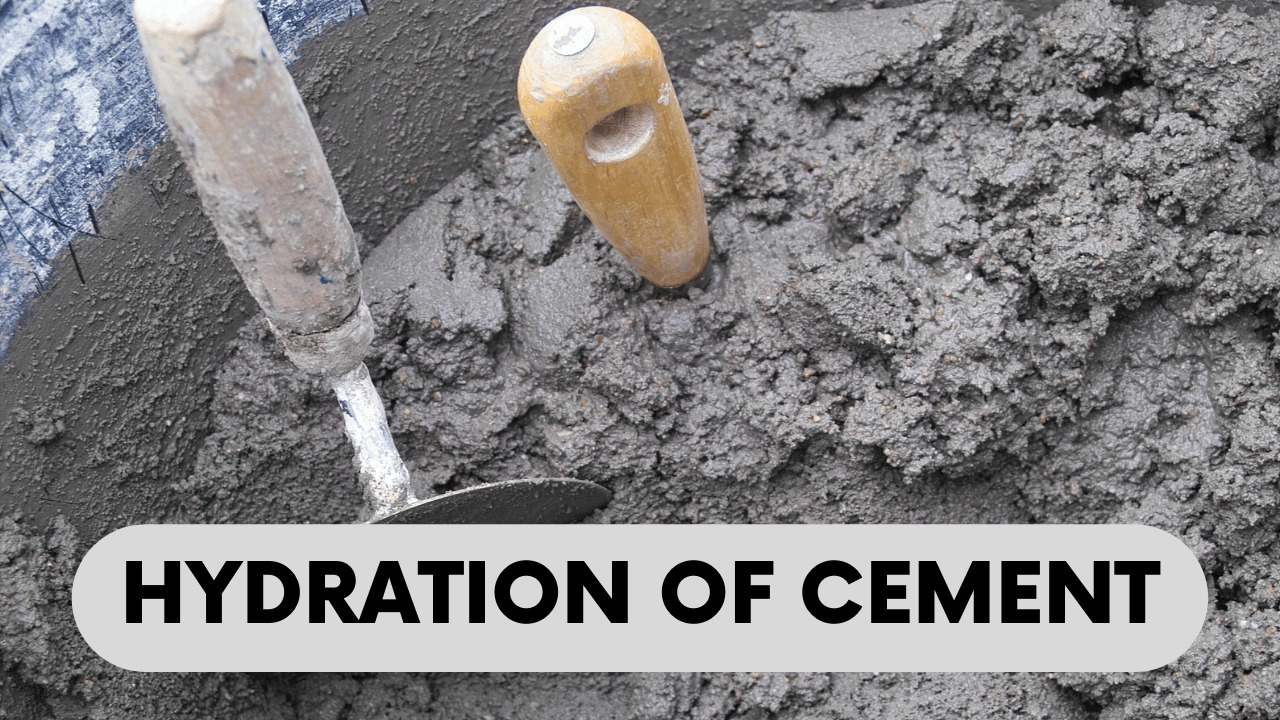The manufacture of ordinary Portland cement involves a myriad of steps, each of which is to be carried out properly. From collecting the crude materials to packing the final product, cement manufacturing requires heedfulness to ensure the product conforms to the intended use.
The primary raw materials for the mass production of cement can either be calcareous or argillaceous. The former ingredient is obtained from limestone, marl, cement rock, chalk, etc., whereas the latter one is procured from clay, slate, blast furnace slag, shale, etc.
The process of manufacturing cement can either be a wet process or a dry process. The basic difference between the two processes is in the method the raw materials are ground and mixed. In the dry process, the raw materials are crushed first and dry mixed.
Contrarily, in the wet process, the crude ingredients are wet-ground i.e., water is added whilst their crushing. Both of these methods are discussed in detail. The figure below delineates the general process diagram for the manufacture of cement.
Fig.: An outline on cement manufacturing
Table of Contents
Dry Process
This process is made a preference when the available raw materials are quite hard and are to be crushed separately and mixed. Although the final product manufactured is costly and the process is time-taking, the dry process proves advantageous when employed for quite hard raw materials. The steps involved are enlisted below:
- Once the dry ingredients are mixed post crushing, a small amount of water is added to the mix to supplement the moisture content to about 14%. Consequently, the addition of water propels the cohesion process and small lumps begin to form.
- The cake-like lumps are dried and fed to a rotary kiln, where they are subjected to a very high temperature. A chemical reaction known as calcination takes place inside the kiln as a result of which the volatiles evaporate and oxidation of the mass occurs.
- Subsequently, small balls are formed inside the kiln called clinkers.
- The clinkers are aerated to slake the free lime present and during this, some moisture and carbon dioxide present in the atmosphere get absorbed into the clinkers.
- Once the clinkers are cooled, they are ground to a powdered form in tube mills. At this stage, a minuscule quantity (2-3%) of gypsum is added to the mix to coat the cement particles and retard the setting of cement.
- The desired cement powder is ready and is finally packed and transported.
Fig.: Rotary kiln
A flow diagram summarizing the above steps is given as follows;
Wet Process
This process is suitable for raw materials that are not available in a very hard form and can easily be crushed when water is added. A vantage of using this process is that it allows proper proportioning of the raw materials. In addition, the homogeneity of the slurry can also be played with or regulated. The steps involved in the wet process are described below:
Fig.: A wash mill
- The raw materials are crushed and fed into a wash mill.
- A small amount of water is added to the ingredients and the grinding action in the mill is propelled by the presence of steel balls. These balls further pulverize the entire mass and a slurry is formed.
- The proportions of various compounds present in the slurry are adjusted to the requisite composition in the storage tanks (silos).
- The proportioned slurry (containing almost 40% moisture) is transferred to a rotary kiln where elevated temperatures compel the moisture to evaporate, leaving behind lumps of the mass.
- The lumps are further heated at a temperature ranging from 1500°C to 1600°C as a result of which a relatively hard mass called clinker is formed.
- The clinkers are cooled and then fed to a tube mill for grinding purposes.
- While the grinding operation is being carried out, a small quantity of gypsum is added to the clinkers.
- The final product is powdered cement that is packed, stored, and later transported or used for purposive works
Fig.: Wet process of cement manufacture
A flow diagram abstracting the afore-mentioned steps is given below;

